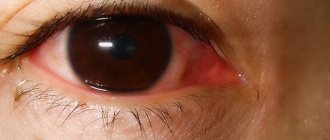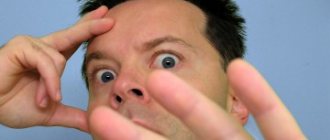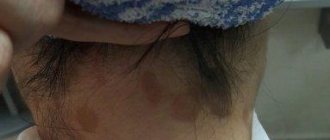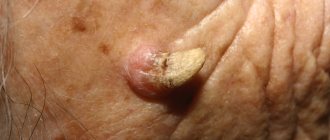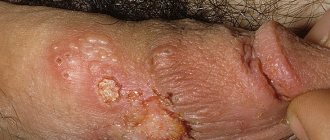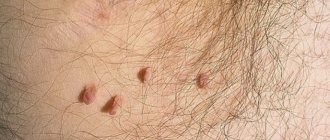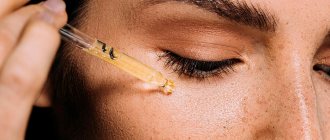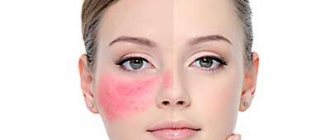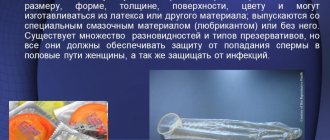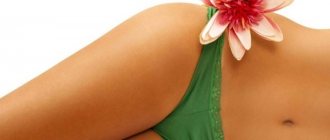One of the common non-infectious skin diseases that most often affects the facial skin and is chronic in nature is rosacea (rosacea, usually on the face or nose). This skin disease occurs mainly in women in the age range from 30 to 50 years. The disease has characteristic symptoms, but unclear causes, which complicates treatment.
But experienced medical doctors will be able to select an individual treatment plan and either completely relieve the patient of symptoms and cosmetic defects, or significantly improve his quality of life.
Versions about the origin of the disease
From the point of view of the mechanisms of development, rosacea is the hypersensitivity of skin vessels to certain factors. In turn, among the causes of hypersensitivity are genetic predisposition and the bacterium Helicobacter pylori. Until recently, the subcutaneous demodex mite was considered the culprit of the disease, but recent research and practice of treating rosacea with a laser, along with before and after photos, have proven that the above-mentioned microorganism has nothing to do with it.
Rosacea (rosacea) - symptoms and treatment
The mechanisms of development of the disease are still being studied and clarified[1][9][10], but a key role in the pathogenesis of rosacea is now played by a violation of vascular tone - angioneurosis. In particular, the mediator bradykinin is involved in the development of transient and persistent facial redness, the level of which also increases during menopause, causing characteristic hot flashes. The same effect can be observed during the reaction to psycho-emotional stimuli[15], especially in people with an unstable psyche and a particular tendency to pronounced vegetative manifestations.
With rosacea, there is a release of other vasoactive inflammatory mediators - histamine, serotonin and prostaglandins.[8]
Some studies confirm that changes in the microvascular bed also activate special proteins - cathelicidins [2], which affect the cells of the inner lining of blood vessels (endotheliocytes), and can also affect local immunity and cause inflammation. It is noted that in people with rosacea, the level of cathelicidins, as well as protease enzymes in the facial skin, is sharply increased.
Excessive ultraviolet irradiation[6] can also change vascular tone due to its damaging effect on the vascular wall, which leads to its atony and increased fragility. In addition, UV irradiation causes degradation of dermal fibers, which also makes the skin more vulnerable to external factors.
Rosacea, provoked by taking topical corticosteroid drugs (especially fluoride-containing ones), has a special development mechanism. The fact is that with the superficial occurrence of intradermal small blood vessels, the network of which is especially well developed on the face of people predisposed to rosacea, corticosteroid drugs are absorbed more intensively. In addition, their peculiar “depot” on the surface of the skin is formed in the dilated follicular ostia, through which they penetrate into the sebaceous glands. Long-term use of steroid drugs worsens the bactericidal properties of the skin, thins the epidermis, which increases the likelihood of pathogenic microorganisms penetrating into the deeper layers of the skin with the subsequent development of inflammation.
Inflammatory processes during the appearance of papules and pustules are also stimulated by the bacterium Bacillus oleronius, which is secreted by Demodex mites.[16] In addition, Staphylococcus epidermidis is often involved in the formation of pustular elements of the rash and visual disturbances.
Chronic inflammation is accompanied by functional insufficiency of small blood and lymphatic vessels of the face, which leads to the development of edema (lymphedema), fibrotic changes and thickening of the skin.
The main pathogenetic links of rosacea
Differential diagnosis
To make a diagnosis, the presence of persistent erythema of the central part of the face is required, which has bothered the patient for at least 3 months. A more accurate determination of the subtype is possible if at least one of the additional symptoms is present.
In order for the treatment to be prescribed correctly, the doctor needs to differentiate rosacea from such serious diseases as:
- Polycythemia vera;
- Systemic connective tissue lesions;
- Carcinoid tumors;
- Mastocytosis;
- Rosacea-like or steroid dermatitis;
- Contact dermatitis.
External therapy for rosacea on the face
- Therapeutic creams and ointments: “Bepanten”, “Aven Antiruzher”, “Ruboril”. For care, you can use special pharmacy lines. Also popular are medicinal cosmetics against rosacea from the brands Bioderma and La Roche Posé;
- Antibiotic-based lotions and compresses (erythromycin, metronidazole);
- Creams containing azelaic acid “Skinoren-gel” or “Azelac”. For a good effect, they should be applied to clean, dry skin 2-3 times a day. Azelaine quickly reduces the symptoms of rosacea, but sometimes causes allergic reactions on the skin, so creams with azelaic acid must be used with extreme caution.
- Medical preparation “Ascorutin” for strengthening blood vessels and getting rid of their thinning.
- special creams “Akriderm” and “Ovante”. Their use is absolutely safe for patients even with severe manifestations of the disease. “Akriderm” is a short-steroid drug, the average course of treatment is 2-3 weeks.
Special forms of rosacea
The disease rosacea can take different forms. Highlight:
- Conglobate rosacea - growths called conglobates appear at the site of redness. The reason may be due to taking medications containing iodine or bromine;
- Steroid rosacea – the problem develops due to the use of drugs containing hormones (ointments, creams or tablets). It is important to remember that the treatment process is very complex;
- Fulminant rosacea - in 90% of cases it occurs in women 30-35 years old. It is believed that the main cause is hormonal imbalance or nervous tension. If the form is recorded in women over 50 years of age, then the problem is associated with menopause. Rosacea develops unexpectedly and progresses rapidly. The treatment is complex and lengthy, the effectiveness of the effect is low;
- The edematous form of rosacea – the problem occurs in 10% of cases. A characteristic feature is swelling in the area of the cheeks, nose, eyes and chin, which has a purplish color. Changes in appearance are pronounced.
The initial stage is a mild form of rosacea, while in the case of papulo-pustular rosacea, special treatment is required.
You can learn more about this disease from this video:
Treatment
The primary goal for the treatment of this pathology is to eliminate the causes that provoked its appearance. Sometimes in the early stages this is enough to cure the disease.
Local administration of vasoconstrictor and anti-inflammatory drugs is indicated. Products with keratoregulating and sebocidal effects are used to deeply clean pores and remove dead skin particles.
Antihistamines, antibacterial therapy, and antiparasitic drugs are also used. Physiotherapeutic treatment methods are widely used , such as:
- cryotherapy;
- electrocoagulation;
- laser exposure.
Prevention
Medicine does not yet know the exact method of how to cure rosacea on the face forever. The main task is to make the remission period as long as possible.
To prevent the appearance of rosacea, a number of preventive measures should be followed:
- monitor your diet;
- use cleansing cosmetics that are suitable for your skin type;
- apply sunscreen;
- do not expose the body to temperature changes (do not visit baths and saunas, cover your face from the sun in summer, protect from frost and wind in winter).
Only basic care and long-term therapy in combination will have a positive result in the treatment of rosacea.
conclusions
Rosacea is a common chronic skin condition with redness of the facial skin, initially intermittent and then irreversible. More severe forms of the disease are characterized by telangiectasia, papulopustular rash, lymphedema, and thickening of the skin. The disease is often provoked by cosmetics, alcohol, hot food, and psychological stress.
Rosacea usually affects people over 30 years of age. The etiopathogenesis of this disease is complex and consists of various factors: increased expression of TLR2 receptors, changes in the number of mast cells, the presence of Demodex mites, vascular dysregulation.
Demodex mites are thought to activate TLR2 receptors, which promote an increase in the serine protease kalikrein 5. Kalikrein 5 cleaves the cathelicidin peptide LL-37 into fragments with inflammatory properties that induce keratinocytes to secrete IL-8. Thus, inflammatory processes in the skin occur constantly.
In addition, various stimuli cause vasodilation due to increased mast cells and vascular dysregulation. For these reasons, clinical signs of rosacea appear.
Various medications are used to treat rosacea, but none of them cure the disease completely, but the development of worsening symptoms can be curbed. First of all, it is recommended to avoid provocative factors. The disease requires local or systemic antibiotic treatment with azelaic acid depending on the severity of the disease.
ONLINE REGISTRATION at the DIANA clinic
You can sign up by calling the toll-free phone number 8-800-707-15-60 or filling out the contact form. In this case, we will contact you ourselves.
If you find an error, please select a piece of text and press Ctrl+Enter
General recommendations for therapy
A doctor observing a patient with rosacea must bring to his attention a list of necessary recommendations. They differ depending on the severity of the patient’s condition and his age (especially for women in menopause). Therapeutic measures are based on providing daily adequate and complete care for the affected skin, with the goal of restoring its protective functions.
As mentioned above, great importance is attached to identifying and eliminating concomitant factors that increase the severity of the condition: traumatic exposure to weather conditions, consumption of spicy/hot foods and drinks, as well as alcohol, excess in eating, use of irritating cosmetics, etc.
Important recommendations include the use of sunscreens necessary for skin safety. Products should be selected taking into account the high sensitivity of patients, at the same time have a sufficient sun protection factor, and not have an irritating effect.
The least irritation can be caused by indifferent compounds: titanium dioxide or zinc oxide, which block solar radiation due to their physical properties. When choosing a cream with chemical UV filters, you should avoid formulations with sodium lauryl sulfate, menthol and camphor, giving preference to silicones - cyclomethicone or dimethicone. Silicone additives are low comedogenic, have water-repellent properties, and reduce the irritating effects of chemical UV filters.
Daily skin care for patients allows the use of tinted cosmetics with a light consistency, which can be applied 1 to 2 times throughout the day. It can be powder or a shaken fluid mixture. The use of such light cosmetics is not capable of aggravating the course of the disease and has a positive effect on the general well-being of the patient.
How common is rosacea? What is the risk of getting sick?
The content of the article
There is little in the scientific literature about epidemiological studies of rosacea. According to a UK study, the incidence of rosacea is 1.65 cases per 1,000 people per year.
A study conducted by German scientists showed that out of 90,880 people, more than 2% suffered from rosacea. In 80% of patients, the disease is diagnosed at the age of 30 years.
- In women, the risk of developing rosacea increases from age 35, with the highest incidence occurring between the ages of 61 and 65.
- In men, rosacea begins to develop later, at the age of 50, and the highest incidence is observed at 76-80 years.
Research shows that rosacea is more common in women. however, some researchers report no significant gender differences. In rare cases, the disease also affects children. Rosacea is more common in people with fair skin (skin types I to II) than in people with darker skin.
Possible causes of rosacea on the skin
Dermatologists call the following factors fundamental in the appearance of rosacea:
- Infection with subcutaneous Demodex mite. Not in all cases, but quite often when prescribing therapy for demodicosis, carried out with benzyl benzoate, patients are cured of rosacea.
- External stimuli. For example, as a result of irritation of the gastric mucosa, the blood vessels of the skin dilate.
- Bad heredity. Yes, unfortunately, if one of your parents had rosacea, then there is a high probability that this pathology will manifest itself in you.
- Disorders of the digestive system.
- Psychological problems (psychosomatics). It has been proven that stress and mental disorders aggravate the problem of rosacea.
- Alcohol abuse and excessive smoking. Consumption of various hot sauces and spices;
- Long-term use of certain medications (for example, Akriderm corticosteroid cream).
The following groups of people are most susceptible to this pathology:
- middle-aged women (often from Scandinavian countries) with fair and thin skin;
- people whose facial skin is constantly exposed to hot and dry air or water;
- people with pathologies of the gastrointestinal tract (gastritis, stomach ulcer);
- women in the postmenopausal period.
